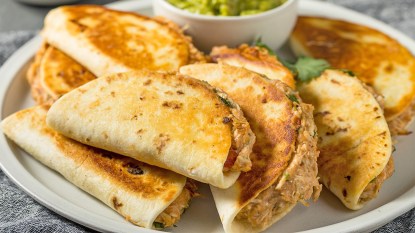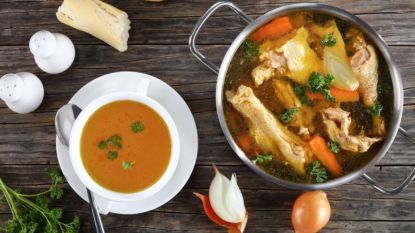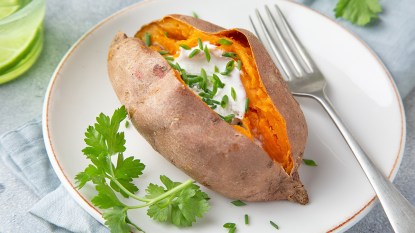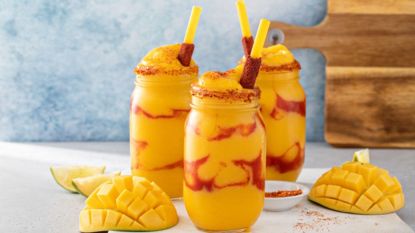10 Delicious Protein-Packed Foods for When Meat Is Running Low
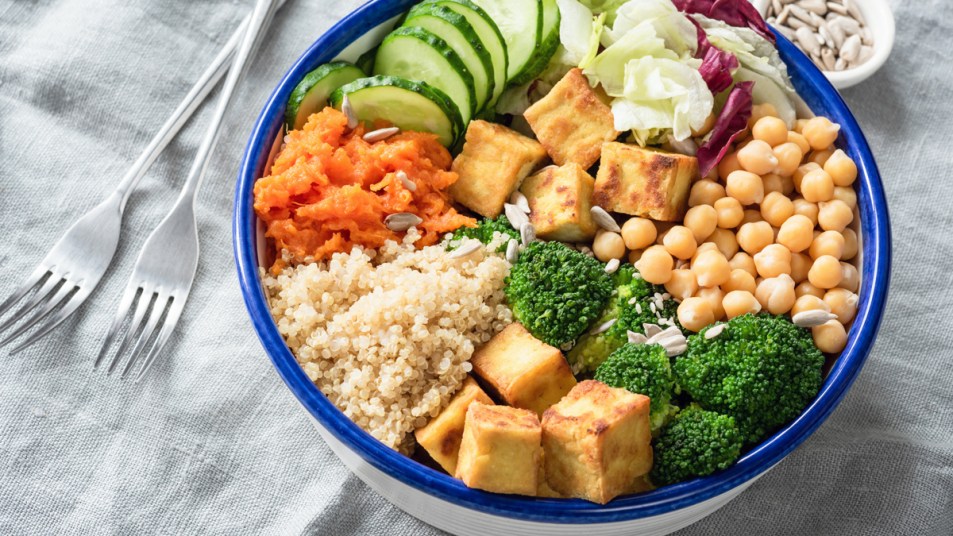
Shopping for groceries has changed a lot over the past few months as we all cope with the COVID-19 pandemic. Most recently, the high number of cases found within the meat industry is causing many people to fear a shortage, or that our favorite cuts of beef, chicken, and pork could see a significant spike in price.
It all might mean serving up less meaty dishes for the time being, but it doesn’t have to get in the way of making sure you and your family are eating enough protein. Plus, going without meat every now and then is good for you anyway!
We took a look at some of the yummiest plant-based sources of protein and rounded them up (with nutritional data from the USDA). Take a look and see what you should add to your cart on your next grocery run.
Edamame
Cooked and shelled, one cup of edamame has 18.5 grams of protein! Each little pod also has a ton of calcium, magnesium, potassium, vitamin A, and a little vitamin C. You’ll get about the same level of protein and nutrients from other soy products like tofu. You can snack on them all on their own or add them to things like salads for a refreshing crunch.
Tempeh
A cup of this version of soy will pack in even more protein than edamame or tofu with a whopping 33 grams. It’s a popular meat substitute with a savory, mushroom-like flavor that can be adapted to pretty much any type of seasoning. Tempeh is also rich in vitamins and minerals like iron, potassium, zinc, and B-12.
Chia Seeds
One cup of these seeds contains 30 grams of protein. They’re also high in carbs (48 grams), but have almost exactly the same amount of fiber to balance that out (46 grams). It’s yet another helpful source of calcium, magnesium, potassium, and selenium, plus a li’l bit of vitamin C. They have a mild, nutty flavor that works great when added to smoothies.
Lentils
One cup of lentils will give you 15 grams of protein, plus 13 grams of fiber. There’s also quite a bit of magnesium and calcium, plus some iron, selenium, and a dash of vitamin C. The nutritional amounts can vary between red, black, green, and other hues, but they’ll still be a healthy foundation for your meals.
Chickpeas
Also known as garbanzo beans, one 16 oz. can of chickpeas contains 24 grams of protein. They’re fairly high in carbs (66 grams per can), but also have a lot of fiber (about 22 grams). You’ll also be chowing down on a hefty amount of calcium, potassium, and selenium. You can roast them up for a crispy snack or add them uncooked to salads and grain bowls.
Pumpkin Seeds
Snacking on a cup of these salty seeds or adding them as a crunchy topper to salads and grain bowls will give you almost 14 grams of protein. They’re also another great source of magnesium and potassium.
Peas
Whether they’re fresh, frozen, or from a can, a cup of these little green veggies will give you about 8.5 grams of protein. Each spoonful is also high in vitamin C and, yet again, minerals like magnesium and potassium.
Quinoa
Piling veggies or any of the items listed above on top of this pillowy grain will give you an extra 8 grams of protein per cup of quinoa. There’s also plenty of calcium, magnesium, potassium, and selenium in each bite, too.
Baked Potato
It’s true: Your favorite starchy spuds are also great sources of protein! One large baked potato will net you around 8 grams of protein. Other cooking options, like roasting or mashing, will knock that down to about 5 or 6 grams, but it’s still a good protein boost. The tubers are also surprisingly rich in vitamin C, plus more calcium, magnesium, and potassium.
Broccoli
One cup of chopped up broccoli sautéed with oil will give you about 5 grams of protein. You can easily layer the tasty veg along with other things on this list for a heftier protein punch. And — you guessed it — you’ll also get some calcium, magnesium, and potassium.


